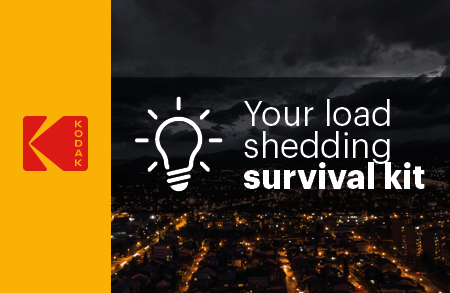As we enter the second half of 2021, it looks like load shedding is showing no signs of abating. While these power outages are having an impact on daily life, there are a handful of simple ways to cope with load shedding to ensure you maintain a sense of normality and routine.
-
Stay in the know
Knowing when your municipality is due to experience a power switch-off is vital to ensure you plan ahead properly. You can view the load shedding schedule on the Eskom website and filter down by region, or download one of the many load shedding apps for iOS or Android, such as EskomSePush or Load Shedding Notifier.
-
Back-up with batteries
If there are any appliances or systems that you need to keep running during a blackout, you should ensure you can support them without mains power and that you have enough batteries stored to do so. For example, many security system alarms have the option to be battery powered, enabling you to continue feeling as safe as possible — even when the electricity is down.
-
Invest in energy-efficient homeware
Making more energy-efficient swaps around the house helps relieve pressure on the national grid and minimise load shedding hours. Choosing energy-efficient lightbulbs, washing dishes on a lower heat and air-drying your clothes instead of using the tumble dryer all contribute to reducing demand and freeing up power.
-
Choose gas over electric
Wherever possible, ensure you do not have to rely on electricity to meet your basic needs. This can look like swapping your electric stove for a gas hob — meaning you can still boil water and cook hot food when the power goes out.
-
Stock up on surge protectors
Investing in a surge protector is imperative for any home or small business in South Africa. Power surges to your electrical appliances take place when the power comes back on. Without the proper protection, the fluctuation in voltage can damage the components in electronic devices. Surge protectors are inexpensive but will ensure you do not have to replace costly appliances, such as TV sets or refrigerators.
-
Switch to solar
While all of the methods above are helpful ways to make load shedding more bearable, the best way to stay safe with round-the-clock power is by running on your own electricity. Solar is South Africa’s go-to form of renewable energy thanks to the high levels of PV irradiation. Installing a solar system at your home or business means you can generate free, consistent power throughout the day and never have to worry about Eskom or the national grid letting you down.
What’s more, if you choose a battery back-up as part of your solar installation, you can store any surplus power generated throughout the day and use it once the sun goes down — giving you reliable, renewable energy when you need it most.
You can find three KODAK Solar Packages that have been designed with load shedding in mind: then Entry Level, High Power and MAX Power packages. Each solution includes every component you need for a complete load shedding system, giving you energy you can count on.
Want to know more about KODAK Solar Products? Download the free brochure and unlock your energy freedom. If you are ready to get started on your renewable journey, find an installer near you today.




